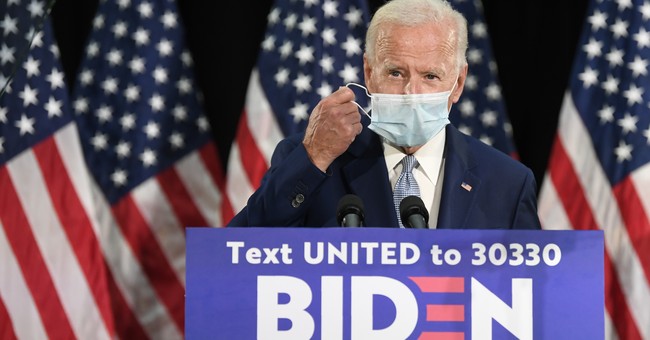Media Interpretation of Recent Joe Biden Rally Crowds is Significantly Different than Trump in Tulsa

I mean, if size matters…
By now we have all become inundated with the breathless reports of the diminished crowd size that was witnessed at President Trump’s campaign rally in Tulsa on Saturday. By any measure it was a PR disaster, one of the campaign’s own making. When you tout a million people are interested and you barely outdraw the audience of a Netflix comedian special you have invited all manner of rabid response from a hostile press corps.
What is lacking from the press, unsurprisingly, is consistency. What the baseline measure for the event has been are overflow crowds at previous Trump rallies. Granted, there were mitigating factors going into Saturday; it was the president’s first appearance during the Covid outbreak, a nation embroiled in strife meant there were promised protests to take place, and then there was the Tik Tok rigging of the ticket-taking. None of which erases the juxtaposition of projections and the audience reality, but when the media attempt to indicate this is a sign of waning or wavering support for the president they run into a problem.
That problem is Joe Biden. This is because the moment the press places import on the audience size as an indicator of support for the candidate then you have to transition these same metrics onto Trump’s opponent as a comparative. The press does not want to do this, evidenced by their refusal to do so. As we have reported here earlier, while turnout was truncated Saturday interest in Trump’s rally was amazingly robust, with deeply impressive viewer totals. Joe Biden has struggled mightily in this regard — but he also has his own rally issues.
In late May Biden held a significant campaign event of his own. A kickoff rally to signify the opening of a new campaign office was held in Philadelphia. Biden’s campaign held the audience count at around 6,000 people, while some in attendancewere far less upbeat about the figure. As was noted in a Politico piece later in the week, a general analysis of the campaign — ‘’One local elected Democrat who supports Biden privately told POLITICO the rally was smaller and less energetic than expected.’’
While noted, these sidebar mentions are hardly in comparison to the blanket headlines we were served coming out of the Tulsa event. Arguments can be made that there was far less import placed on Biden’s appearance, but that does little to reflect the grassroots interest. What is to be measured here is not pre-event hype from the campaigns to frame the result, but the actual turnout. This is a tangible measure of enthusiasm in the gentry.
Of note is that Philadelphia is a much larger metropolis, with its metro area population roughly six times as large. It is also considered a Democrat stronghold city, so for Biden to stage a rally to announce the launch of his campaign locally it should have drawn interest. The talk of Trump’s projected crowd sizes as a cause for reporting fails here as well since there was some promise of energetic crowds for Joe. EdRendell, one time governor of Pennsylvania as well as a former Philadelphia mayor, who is a campaign bundler for Biden, said in a late April interview ahead of the event, “We could get tens and tens of thousands of people … For one rally, I think we could do that.”
Well, they could not do it. By Rendell’s estimates they drew about 10-20% of his hoped-for crowd. Where was the flood of headlines on Joe’s failed magnetism? Where were the column inches dedicated to what the muted turnout meant for his interest levels? The press seemed to think it best not to highlight the poor optics of a poor turnout.
This is the perspective needed to counter the press reluctance to balance its coverage. As readers it becomes incumbent to ask, ‘’Okay, and what about the other side?’’, because it is more than evident that is the type of question journalists will not be asking during the campaigns.






No comments:
Post a Comment